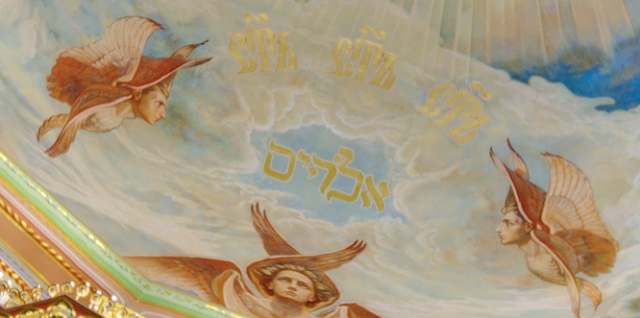Some Orthodox traditionalists mock western iconography as simply "art" or "secular art" and deny they are icons. Some mock Eastern Rite Catholic churches for including Western icons and decry it as Latinization! This article points out an example of Latinization in an Orthodox Cathedral despite no compulsion from Rome!
Years ago, before Russia's formal entry into Ukraine's then civil war, I visited Moscow and her famous Orthodox churches. Among them was the Cathedral of Christ Our Savior. It was built in pre-Soviet times, the Communists demolished the church and built a huge swimming pool, Moscow Pool, in its place. After the collapse of the USSR, the city raised funds, and it was rebuilt (supposedly) to the exact specifications of the former Cathedral.
I was not able to take photos of the interior despite the church being a recent rebuild and the icons being recent (perhaps to retain a sense of the sacred).
There are a number of oddities to the Cathedral, a lot of Latinizations, despite its holding in prominence in the Russian Patriarchate.
The iconostasis has the first two bottom rows with western icons:
The icon behind the altar is in the tradition of Da Vinci's Last Supper:
If Latin iconography were so reprehensible as some ultra traditionalist Orthodox claim, why has not this prominent cathedral been corrected?
In addition, the Dome's iconography is particularly "non-canonical" with a unique depiction of the Trinity that differs from the famous depiction by Rublev.
Contrary to Orthodox canon, the Father is depicted, not just that, as an old man, rather than appearing the same as Christ! Christ is depicted as a Child! The Spirit as a dove.
Also, an aside, the Dome has a funny mistaken in the picture above with 3 angels above the Father:
The three words on top are Old Church Slavonic of
свѧтъ svyat (holy) abbreviated. There is a tilda, or
titlo above the T, just as in Greek for commonly used words showing the word is abbreviated. Though you would think they could simply make space and spell it out, this is common even in icons with plenty of space. This is not the interesting part though, this is an abbreviated trisagion (thrice holy), "Holy, Holy, Holy God...".
Beneath it are Hebrew letters, or at least they should be. Presumably, and what appears to be attempted is the Hebrew spelling for God--אלֹהִים Elohim. The most embarrassing is the second letter (from the right) is nonsense. The top starts off as the correct letter--a lammed "L" but finishes at the bottom like the letter veit/beit. Correction the lammed looks likes somewhat similar to the number 7-- לֹ. The second most embarassing mistake is the next letters, presumably a heh--הִ. It is drawn instead as a ר -- resh with a dot or comma under the left end, rather than a line that extends to the bottom, or perhaps the dot is the 'i' diacritical. The diacritics are inconsistently used with nothing below the aleph, the failed lammed has the mark for the o sound, if the dot below the failed heh is a diacritical, its misplaced and should be under the yod. An attempt was made. I say this not to mock necessarily, I have seen a Church in France with questionable Hebrew!
Perhaps the poor Hebrew reflect the painstaking eye for detail to make an exact replica of the former Cathedral?
In addition, to western icon used for the iconostasis, there are scattered examples of western art:
The left of the altar is a very western nativity scene:
Going back to the art used, the exterior of the church also has reliefs, if not statues, which generally are not that common in Byzantine Christian churches.






No comments:
Post a Comment